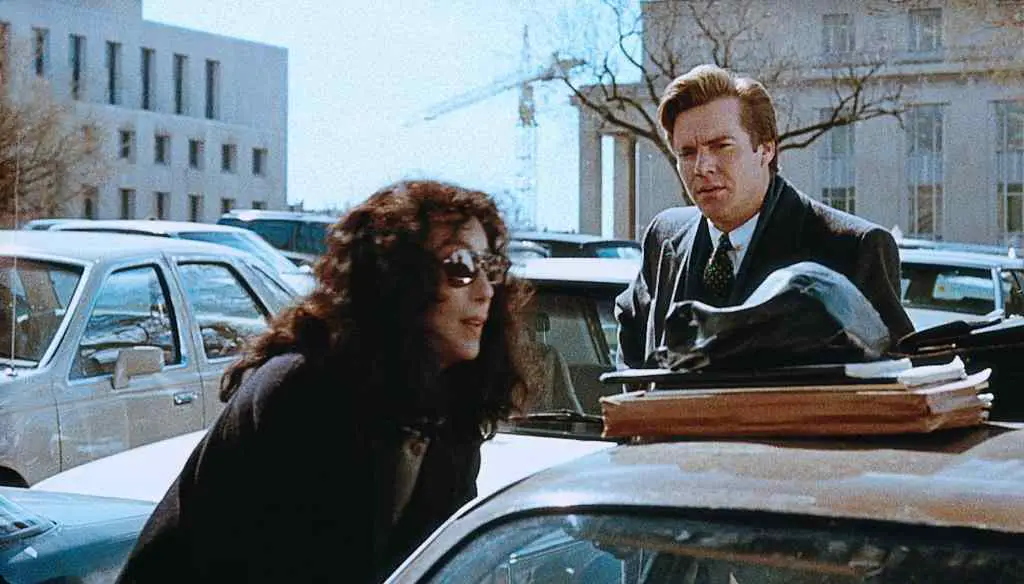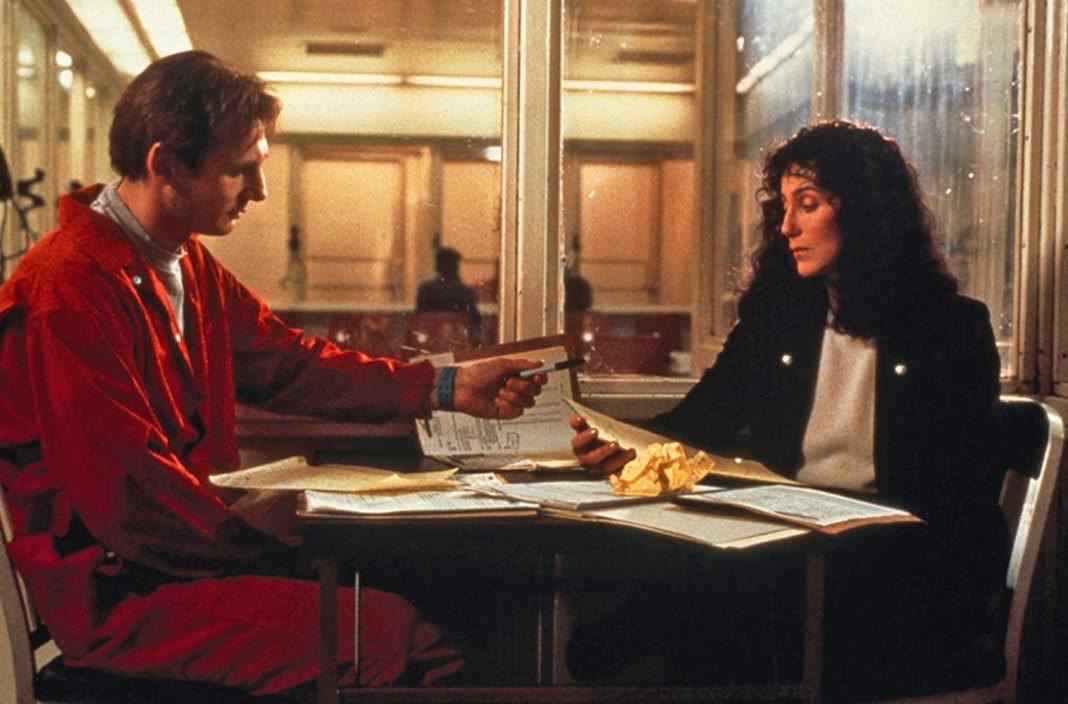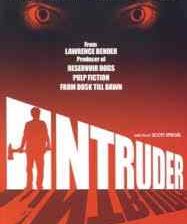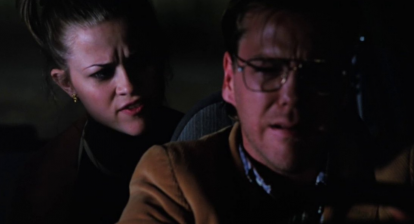Welcome to Back to the ’80s. This recurring feature aims to take a look at the good, the bad, and the ugly from horror’s most beloved decade. Regardless of which category a particular film falls under, this segment will spotlight films that horror fans can appreciate for one reason or another. We will look at how some of these flicks have stood the test of time and others have not aged quite so well. Regardless of what they look like today, these efforts from the 1980s laid the groundwork for the horror genre as we know it today.
Kathleen Riley (Cher) is an overworked public defender. Just as she prepares for a much-needed holiday, Kathleen is assigned a new case. A file clerk with the Justice Department, Elizabeth Quinn (Katie O’Hare), has been found murdered, and the only suspect is deaf-mute homeless veteran, Carl Wayne Anderson (Liam Neeson). Faced with a stubborn judge (John Mahoney) and an unethical juror (Dennis Quaid), Kathleen’s case leads her into a world of corruption. As she closes in on finding answers, she finds her life on the line.
Directed by Peter Yates, Suspect is an effective feature with a stellar cast. This 1987 neo-noir is loaded with suspenseful moments. Yates projects the idea of a chilly loneliness within each character. This idea is personified in the cold streets of Washington D.C. in wintertime. Suspect is an update on the late 1940’s/early 1950’s film noir flicks. Cher’s character is the law-abiding citizen that finds herself crossing the line of morality in order to seek the truth. The screenplay by Eric Roth allows Yates to lead the film into the shadows of the city. The different shades of darkness conceal varying levels of danger.
The tension is crafted through relatable performances. Suspect is a prime example of the neo-noir genre updating the classic motifs of film noir. Everyone has the potential to do either good or evil. However, the actors play their roles seriously and not as caricatures allowing for audience investment. Cher leads that cast as Kathleen. She is a reluctant hero surrounded, figuratively, by land mines. In uncovering the truth, Kathleen’s ethics are tested. Her personal life is sacrificed for a career easily undone by one case. When not jeopardizing her career, Kathleen is putting her life at risk. Cher is able to capitalize on her strong and iconic image. At the same time, she successfully reveals the vulnerability of one overworked attorney.

Dennis Quaid is incredibly likeable as Eddie. He plays a lobbyist unable to coax his way out of jury duty. Quaid’s natural charm is utilized to establish an unlikely, but believable relationship with Kathleen. His flirtatious demeanor allows him to slip in and out of unreachable areas to better assist Kathleen with her case. Liam Neeson delivers a strong performance as Carl Wayne Anderson. A homeless veteran charged with murder, Anderson has developed an antagonistic shell for self-protection. As one both deaf and mute, he has felt the cruel indifference from mainstream society distributed to those who are different.
Yates has developed a feature with well-crafted suspense. The smaller moments will test the viewer’s anxiety just as strongly as the climatic revelations. In one scene, Kathleen and Eddie are researching cases in the law library. Considering that he is a juror in her active case, Kathleen is forbidden interaction with Eddie. Judge Helms (Mahoney) enters the library and the viewer waits with baited breath to see how this potential career-ending moment will conclude.
There are additional scenes of violence and intense chase-sequences; however, there is not an abundance of explicit images. The neo-noir style commands a large degree of pessimism that helps to set up the tension. A graphic depiction of gore becomes unnecessary. The world in this kind of film already assumes the existence of high-level violence. In fact, Yates establishes a foreboding mood with this numbed expectation of oncoming injury. An example of this is Kathleen’s glib reaction to the stabbing of another character. His wound is not fatal, yet deserves more sympathy than received. The characters anticipate and expect pain to enter their lives at any point. Interestingly, this adds to the sense of fear.
The main theme explored in Suspect is survival. A homeless man robs a dead body. An aging politician (E. Katherine Kerr) is willing to sacrifice her values in order to feel desirable. A judge can bend the law for a promotion. Yates utilizes Cher’s character to explore the desperate ambitions of other people and apply what she learns to her own journey. The director exposes the horror in what one person will do to another in order to survive. Despite the pessimistic neo-noir tone, the movie ends on a hopeful note. However, this is not before making a significant commentary on the corruption within human behavior. In particular, the prejudiced flaws within the laws we use to govern ourselves.
Fans of a solid mystery will find much to enjoy with this 1987 film. Especially those that appreciate contemporary television programs like Law and Order. The courtroom drama is equally compelling as the glimpse into life on the cold streets. This feature is worth a look for the mystery as much as the winning performances. Even knowing well the outcome, I have returned to Suspect time and again for the chemistry between Kathleen and Eddie. In particular, to watch Cher strut her stuff. 1987 was a prominent year for the actress. Cher additionally starred in The Witches of Eastwick and Moonstruck. Winning the Oscar for the latter film, she also released one of her most acclaimed albums (of course, named after herself) to date.






